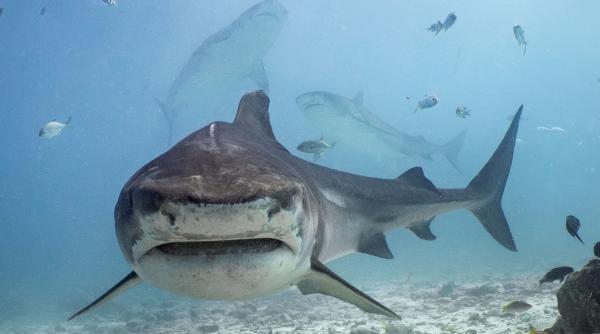Foundation Conservation Carpathia, the largest conservation initiative in Romania, said recently that it completed its genetic monitoring study on the wolf species (Canis lupus) aimed at determining the number of wolves in Romania's Southern Carpathians, on a pilot area of 1,400 square km. The survey also confirmed, for the first time in Romania, the presence of hybridization between wolves and dogs, which the non-profit says can threaten the species.
The study, which was mainly based on non-invasive DNA sampling, with DNA extracted from hair, scat or urine deposited by animals in their habitats, was conducted in 2018–2020. Its results led to an estimated density of 2.35 wolves/100 square km in the Southern Carpathians.
Across the survey, the NGO identified 48 individuals, namely 27 males, 20 females plus one wolf-dog hybrid male. Following further analysis, 40 wolves and the hybrid were grouped into six packs.
"The remaining 7 wolves could not be assigned to any specific pack and were assumed to be either dispersing animals or members of packs neighbouring the study area stochastically detected at the edge or outside of their territory," Conservation Carpathia said.
The non-profit also said that study results indicate shifts in breeding pairs and unexpected changes in pack composition. Thus, throughout the three years of the study, changes in the breeding pairs were detected in 2 out of 6 packs.
Further on, the study identified the presence of a wolf-dog hybrid in the area, marking the first official genetic confirmation of hybridization between wolves and dogs in the Carpathian Mountains. Conservation Carpathia says that, although the finding may not look like a threat at the moment, it may evolve and lead over time to genetic degradation followed by total extinction of this species.
"In the case of Romania, hybridization is a phenomenon caused by stray dogs that appeared in wolves' habitat. Their presence endangers the genetic health of the wolf population for decades to come," the NGO said.
To evaluate this phenomenon, researchers from the Conservation Carpathia Foundation collected saliva samples from 21 dogs in the researched area and DNA samples from wolves at the same time.
Dr Ruben Iosif, coordinator of the fauna monitoring department within the Conservation Carpathia Foundation, said that this genetic study "clarifies many unknowns about the wolf population in Romania."
"It is important to monitor these wolves in the long term so that wildlife management and the management of conflicts with farmers are based on science. This way, we can make decisions, we can create models of coexistence, and we can raise certain alarm signals when dangers arise for both humans and wolves, as is the case with the appearance of hybridization, for example," he explained.
According to Conservation Carpathia, official estimates show that the wolf population in Romania numbers approximately 3,000 individuals, but no scientific monitoring methods were used to calculate the numbers for this species.
(Photo source: Foundation Conservation Carpathia)
























 English (US) ·
English (US) ·  Romanian (RO) ·
Romanian (RO) ·